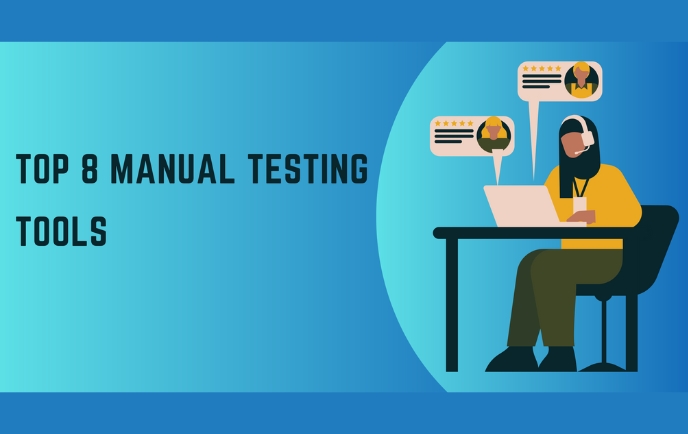The software development life cycle must include manual testing since it enables testers to confirm an application’s functionality, performance, and usability. Utilizing the appropriate equipment is essential for effective manual testing. The top 8 manual testing tools that can speed up your testing procedure and raise the general caliber of your software are covered in this post.
Importance of Manual Testing Tools
Manual testing tools play a vital role in the software development life cycle, ensuring the quality and reliability of software applications. While automated testing has gained prominence, manual testing remains crucial for several reasons.
User Experience Validation
Manual testing tools allow testers to validate the user experience of an application. They can assess how intuitive and user-friendly the application is by performing real-time interactions and observing the application’s behavior. Manual testing tools help identify usability issues, such as confusing navigation, unresponsive controls, or inconsistent design elements.
Ad Hoc Testing
Manual testing tools enable testers to perform ad hoc testing, allowing them to explore the application freely and discover issues that may not be covered by predefined test cases. This type of testing helps uncover unexpected bugs, user workflow bottlenecks, and usability problems that automated tests may overlook.
Also Read: 6 Best Programming Languages For Web Development
Exploratory Testing
Exploratory testing is a flexible and creative testing approach where testers actively explore the application without predefined test scripts. Manual testing tools facilitate exploratory testing by providing testers with the ability to delve deep into the application’s features, try various scenarios, and observe the system’s response. This approach often uncovers hidden defects and helps in refining the testing strategy.
User Interface Testing
Manual testing tools are particularly useful for validating the application’s user interface (UI). Testers can manually interact with UI elements, such as buttons, menus, and forms, to verify their responsiveness, visual consistency, and alignment with design specifications. Manual UI testing ensures that the application looks and behaves as intended, providing a seamless and visually pleasing user experience.
Compatibility Testing
With the ever-expanding variety of devices, platforms, and browsers, compatibility testing has become crucial. Manual testing tools allow testers to manually verify the application’s compatibility across different devices, operating systems, and web browsers. They can validate the responsiveness, layout, and functionality of the application on various configurations, ensuring a consistent experience for all users.
Edge Case and Negative Testing
Manual testing tools are invaluable when it comes to testing edge cases and negative scenarios. Testers can deliberately input invalid data, execute unusual workflows, or simulate adverse conditions to ensure the application handles such situations gracefully. Manual testing tools provide the flexibility and human judgment required to uncover potential vulnerabilities and error-handling issues.
User Feedback Incorporation
Manual testing tools enable testers to incorporate user feedback effectively. Testers can use these tools to simulate user-reported issues, reproduce reported bugs, and validate their resolution. By leveraging manual testing tools, testers can ensure that the application addresses user concerns, meets their expectations, and provides a positive user experience.
Comparison of Manual Testing Tools
When it comes to choosing the right manual testing tool for your testing needs, it’s important to evaluate the features, capabilities, and suitability of each tool. Here, we will compare the top 8 manual testing tools mentioned earlier to help you make an informed decision.
| Tool | Key Features | Suitable for | Programming Language Support | Learning Curve |
| Selenium | Cross-browser compatibility, robust reporting | Web applications | Java, C#, Python | Steep |
| JUnit | Annotations, assertions for unit testing | Java applications | Java | Low |
| Appium | Automation for iOS and Android, wide testing scenarios | Mobile applications | Java, Python, Ruby | Moderate |
| SoapUI | Testing SOAP and RESTful web services | Web services, APIs | Groovy | Moderate |
| Postman | Request sending, response validation, API testing | Web services, APIs | JavaScript | Low |
| TestComplete | Comprehensive test automation, object recognition | Desktop, web, mobile apps | JavaScript, Python, VBScript | Moderate |
| JIRA | Issue tracking, test case management | Manual testing processes | – | Low |
| Bugzilla | Bug tracking, centralized defect management | Manual testing processes | – | Low |
It’s important to consider your specific testing requirements and the nature of your application when choosing a manual testing tool. Evaluate the features, suitability, and programming language support to find the tool that best fits your needs. Additionally, take into account the learning curve associated with each tool, as some may require more time and effort to become proficient in.
Also Read: 7 Most Common Use of JavaScript in Web Design
Selenium
Selenium has become a go-to tool for automating various web applications due to its open-source, free-to-use nature. It’s also very popular and has a great community behind it. It provides a suite of tools that enable testers to write test scripts in various programming languages, such as Java, C#, and Python. With Selenium WebDriver, testers can interact with web elements, perform actions, and verify expected outcomes. Its cross-browser compatibility and robust reporting capabilities make it a popular choice among testers.
JUnit
JUnit is a Java-based unit testing framework that allows developers to write and execute test cases. It provides annotations and assertions for defining test methods and expected results. JUnit is widely used in Agile and Test-Driven Development (TDD) environments. It integrates seamlessly with popular IDEs and build tools, making it an efficient tool for testing Java applications.
Appium
Appium is an open-source tool used for automating mobile applications across different platforms, including iOS and Android. It supports multiple programming languages, such as Java, Python, and Ruby, allowing testers to write test scripts using their preferred language. Appium’s ability to leverage the underlying platform’s automation frameworks, such as UI Automation for iOS and UI Automator for Android, makes it a powerful choice for mobile testing.
SoapUI
SoapUI is a widely used tool for testing web services and APIs. It allows testers to create, execute, and validate SOAP and RESTful web services. SoapUI provides a user-friendly interface for designing test cases, configuring requests, and inspecting responses. Its extensive assertion library and data-driven testing capabilities make it a valuable tool for API testing.
Postman
Postman is a popular collaboration platform for API development and testing. It offers a user-friendly interface for sending requests, validating responses, and managing collections of API endpoints. With Postman, testers can create and execute automated test suites, generate reports, and monitor API performance. Its extensive set of features, including request chaining and environment variables, make it an indispensable tool for API testing.
Also Read: How to Find and Hire NodeJS Developers?
Test Complete
Test Complete is a comprehensive test automation tool that supports both manual and automated testing. It allows testers to create and execute test cases across desktop, web, and mobile applications. Test Complete offers a record and playback feature, script less test creation, and seamless integration with popular test management tools. Its support for multiple scripting languages and robust object recognition capabilities make it a powerful tool for functional testing.
JIRA
JIRA is a widely used issue tracking and project management tool. Although primarily known for its project management features, JIRA also offers robust capabilities for test case management. Testers can create test plans, track test execution, and generate reports within the JIRA platform. Its integration with other testing tools and its extensive customization options make it an ideal choice for managing manual testing processes.
Bugzilla
Bugzilla is an open-source bug tracking system that allows testers to report, track, and manage software defects. It provides a centralized repository for recording bug details, assigning them to appropriate team members, and tracking their status. Bugzilla offers powerful search and reporting capabilities, ensuring efficient bug management and resolution.
Conclusion
In conclusion, manual testing tools play a crucial role in ensuring the quality and reliability of software applications. The top 8 manual testing tools mentioned in this article, including Selenium, JUnit, Appium, SoapUI, Postman, Test Complete, JIRA, and Bugzilla, offer a wide range of functionalities to streamline your testing efforts. By selecting the right tool and leveraging its capabilities effectively, you can enhance your manual testing process and deliver high-quality software products.
Frequently Asked Questions (FAQs)
Can I use multiple manual testing tools together?
Yes, you can integrate different manual testing tools to complement each other’s features and achieve better testing coverage.
Are these manual testing tools suitable for all types of applications?
While these tools cover a wide range of testing scenarios, it’s important to evaluate their compatibility with your specific application and requirements.
Are these manual testing tools free to use?
Some of the mentioned tools, such as Selenium and Appium, are open-source and free to use, while others may have different pricing models or offer both free and paid versions.
Can I automate manual test cases with these tools?
A: Some of the mentioned tools, like Selenium and TestComplete, provide automation capabilities in addition to manual testing features.
How do I choose the right tool for my project?
Consider factors such as the type of application, testing requirements, available resources, and budget when selecting a manual testing tool. Evaluating their features, compatibility, and community support can also help in the decision-making process.

In 2019, Mayank Sharma took up the post of Sr. Test engineer at Devstringx. As a Sr. test engineer, Mayank provides a range of software testing services including test automation, functional testing, regression testing, etc. Apart from that He has a great command of testing tools like Selenium, Katalon, Appium, etc. He loves to keep himself updated with the latest technologies. Based on his well-experienced he shared his knowledge through his blog.

